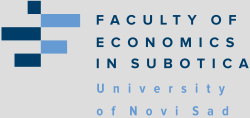RFM – CLV APPROACH FOR MEASURING THE VALUE OF CONSUMER SEGMENTS
DOI:
https://doi.org/10.46541/978-86-7233-416-6_64Keywords:
vrednost potroša?a, segmentacija potroša?a, RFM metod, CLVAbstract
Measuring consumer value is a new field of contemporary marketing research. In the marketing literature,
the necessity of projecting the future value of market segments and the introduction of financial calculations into the
domain of marketing analytics is increasingly emphasized. RFM is a method that can be successfully used in order to
group consumers based on three key criteria: the date of the last purchase - R (recency); frequency of purchases -
(frequency); average monetary amount per purchase - M (monetary amount). RFM provides the ability to identify
those segments which are interested in purchasing a new product. CLV (Customer Lifetime Value) represents the sum
of future profit streams that are expected to be realized during the entire life of the company's cooperation with a
certain group of consumers. RFM and CLV can be used in combination, by applying RFM methods to form consumer
segments and then estimate the lifetime value of the observed segments. By implementing this procedure consumer
segments that are the most attractive for future cooperation could be identified.



